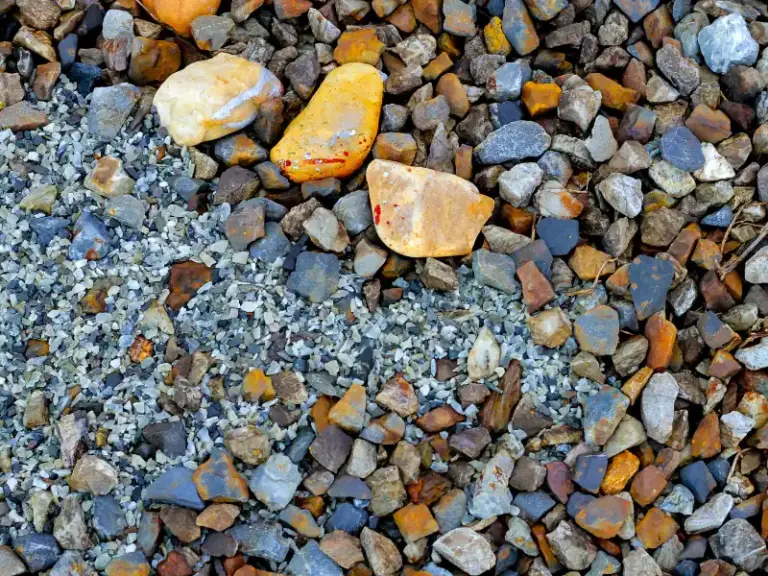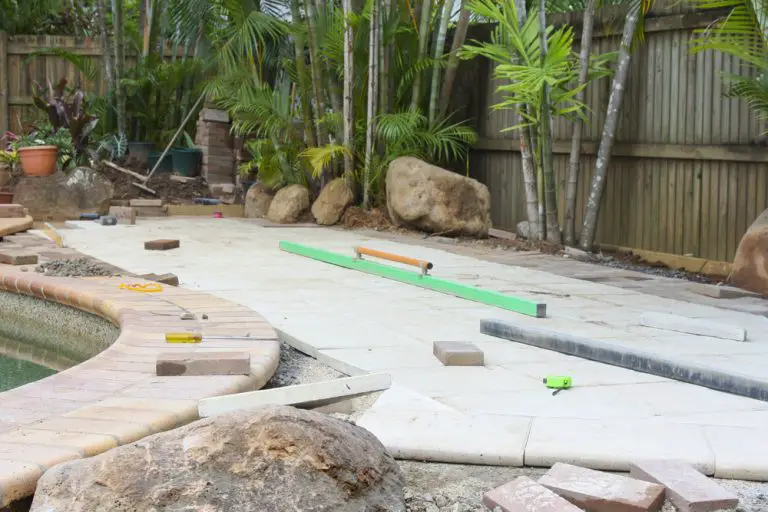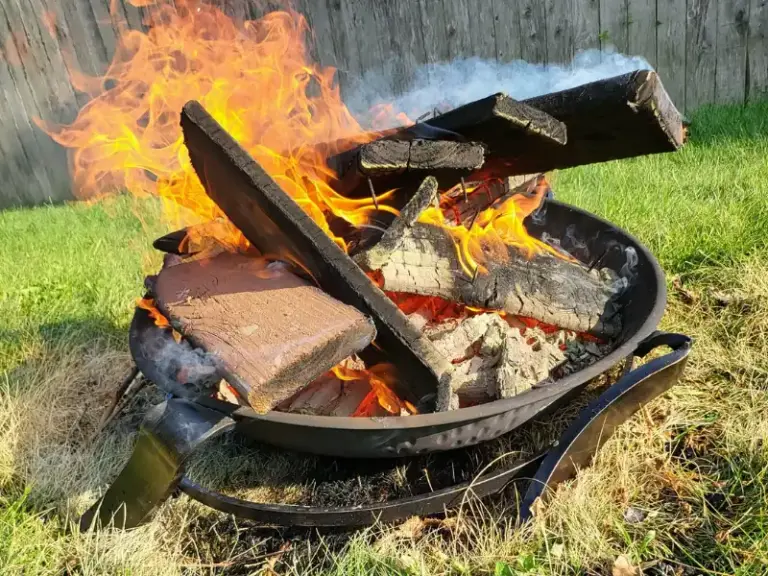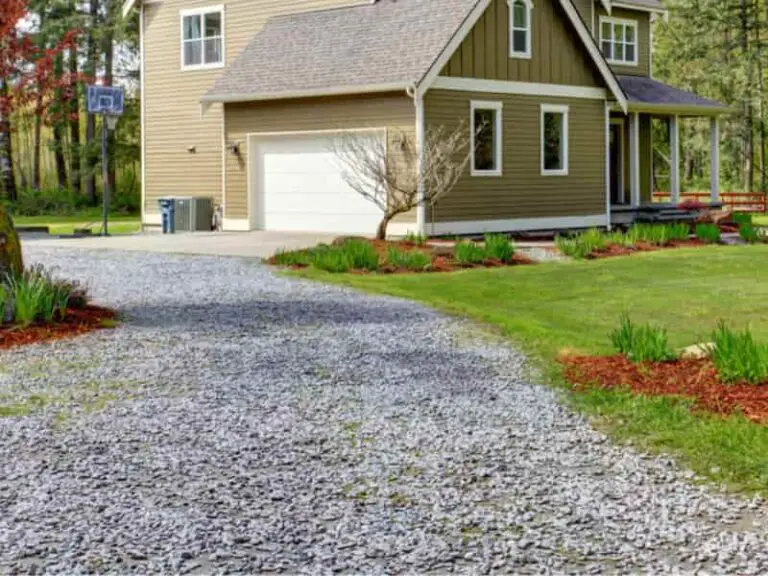How to Compact and Stabilize a Gravel Driveway
Whether on a slope or a flat surface, poorly installed gravel will gradually move and degrade. The instability also makes your driveway uncomfortable to drive on, so you want to make sure you stabilize it.
However, gravel is loose, does not settle easily, and is prone to being moved around by moving water and constant traffic. Compacting loose gravel will make it hard, solid, and stable.
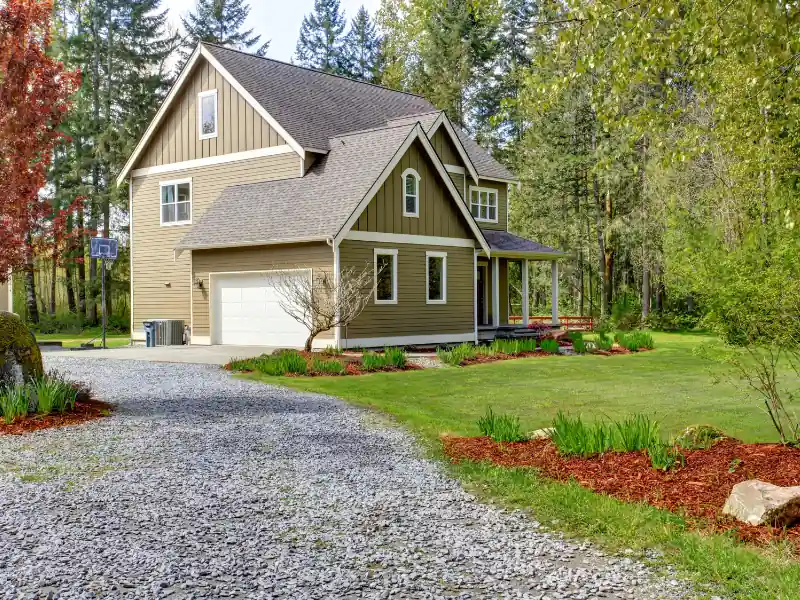
How to compact a gravel driveway to increase stability
On a landscaping job, installing gravel in the driveway is easy and quick, but pouring and leveling is not the complete job. You want to ensure it is stable and that the rocks don’t move around.
To achieve this, compacting and hardening the gravel is required to make it solid and well-settled.
Here’s how to compact and make a gravel driveway solid:
Install a gravel grid
A gravel grid is a type of geotextile material that is used to stabilize gravel surfaces. It is made of high-density polyethylene (HDPE) and is available in various sizes and thicknesses. Although fairly new, gravel grids are highly effective at stabilizing gravel on sloping or uneven surfaces.
Here’s how to install a gravel grid and make your driveway solid:
Materials you’ll need:
Before you start, you’ll need landscaping fabric and a gravel grid. When leveling and compacting the ground, you’ll also need to have a compactor ready.
Procedure
- Dig and scrape out about 8 inches of loose soil and debris.
- Level out the surface while ensuring proper gradient for drainage.
- Compact the soil surface using a heavy roller or plate compactor.
- Lay down a 10 mm weed barrier landscape fabric.
- Put down the gravel grid, ensuring it sits on the landscape fabric.
- Fill the grid with gravel ensuring it is leveled out.
That’s it. Your driveway will be well-compacted, solid, and stable.
Gravel grids provide a stable, rigid framework for the gravel to sit on. When properly installed, they prevent the gravel from shifting and creating the feeling of instability. They also help maintain an even surface across the entire driveway.
Expert note: We use gravel grids in landscaping to stabilize slopes and prevent erosion on walkways, patios, driveways, and pathways.
Add binding agents to compact the gravel
For landscapes and driveways that are level, a binding agent may be enough to keep it in place. We use asphalt or concrete to create compact gravel driveways and pathways. You’ll still need to build a good foundation before binding the rock. Otherwise, it will wear off quickly.
There are various binding agents in the form of gravel stabilizers or liquid stabilizers that are applied straight to the surface to bind particles together and prevent displacement.
To bind gravel, prepare the area by clearing debris and loose dirt, and grading if necessary. Lay a base layer of crushed stone or sand at least 2 inches thick. Spread the gravel evenly over the base layer, then compact it. Apply the binding agent according to the manufacturer’s instructions and allow it to dry before use.
In some cases, you may need to apply a second coat to get a more robust bond that can withstand heavy usage.
EasiHold and Gravel-Lok are some of the commonly used gravel-binding products on the market today.
Regular maintenance is important
Perform regular maintenance, including grading and leveling the gravel, filling in any potholes or low spots, and removing any debris or vegetation that may compromise stability. Poorly graded gravel, for example, is a major reason for stability issues on such driveways.
Over time, larger rocks gravitate toward the same area, especially on busy driveways. Here are maintenance practices that will help settle and stabilize your driveway:
- Grading to improve drainage and prevent erosion.
- Compacting regularly to prevent shifting.
- Removing driveway weeds and debris that can interfere with the stability of the driveway.
Remove dead grasses, leaves, and tree roots on the driveway during and after installation. Organic matter does not compact and can make the driveway unstable and unable to support heavy vehicles and machinery.
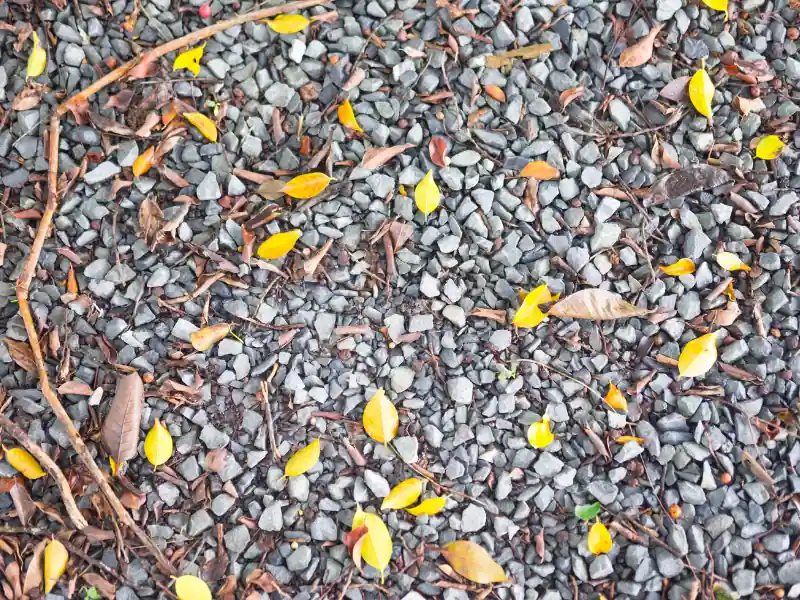
“Following a winter of blading snow from the driveway…Take a garden rake and rake loose gravel that was pushed into your lawn with a snowplow and return that to the driveway.”
Iowa State University
Expert note: I recommend checking your driveway regularly for signs of wear and tear. Compact any loose gravel immediately to prevent extensive damage. Also, sweep away any debris, dirt, and leaves as soon as you notice it.
Compact the loose gravel to harden and settle it
To compact a driveway for more stability, drive heavy vehicles on the driveway, or use mechanical compactors to do the job.
Compacting also helps to keep the gravel particles together so water doesn’t carry them away during heavy rains or floods.
Here are different ways of compacting gravel:
- Use a vibrating plate compactor or roller to compact the gravel layers, increasing density and stability.
- Using a hand tamper: A hand tamper is suitable for compacting small driveways. Simply place it on the surface and push it firmly to compact the gravel. Repeat until you cover the entire driveway.
- Drive over the gravel with a vehicle. If you don’t have access to a hand tamper or a power compactor, you can compact gravel by driving over it with a vehicle. Drive slowly and avoid braking suddenly, as this can create ruts that can cause shifting and worsen the instability problem.
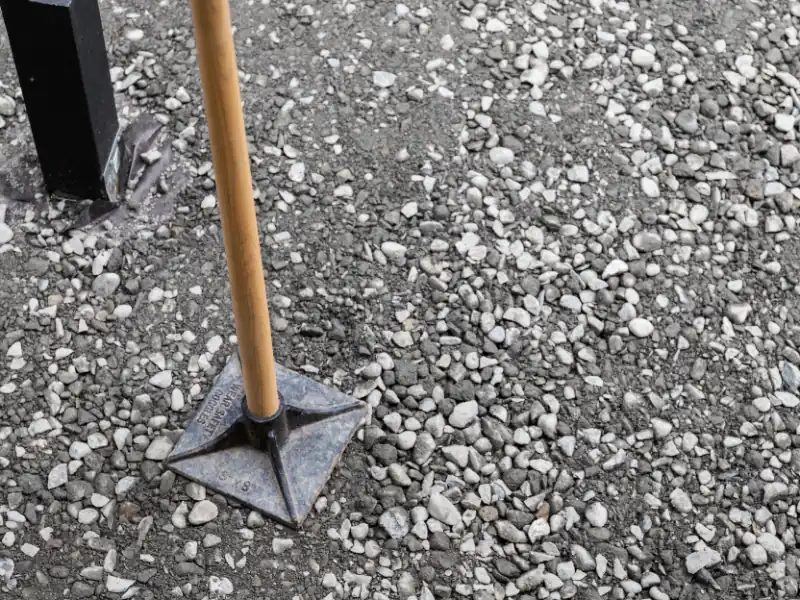
Landscaping tip: Always wet the gravel before compacting. It prevents the pieces from flying around when pressed down. This trick works great if you’re adding fines to the gravel driveway to help with bonding.
Fill in potholes in your driveway
Fill in any potholes holes on the driveway with gravel fillings to prevent water from collecting when it rains. If water collects on the driveway, it moves under and separates it from the sub-base, making it less stable over time.
Filling potholes also ensures vehicles remain stable while passing on the driveway. Potholes are the starting point of extensive wear on driveways, so you want to make sure you level them up as soon as possible.
How to Install a Solid Gravel Driveway
Unstable gravel in driveways indicates a problem with the installation process. Common issues during installation include thin layers, unprepared ground, and improper grading.
To ensure your driveway is solid and stable, follow these steps during installation:
1. Prepare the driveway
A new driveway requires proper preparation of the surface. This involves removing vegetation, debris, and dirt or topsoil. This stuff does not compact easily and will lead to shifting and unevenness over time.
Go as deep as 8 inches to ensure a stable base beneath your loose gravel.
2. Compact the base
Run a roller over the prepped base to ensure it is compact enough before laying any sand and gravel over it.
3. Apply the layers
A gravel driveway laid in three layers remains stable and lasts years even with little to no maintenance.
The base layer: Start with the base layer that comprises crushed stone or sand. This will improve drainage while providing a solid foundation for the gravel. You can also use baseball-sized stones with a diameter above 2 inches. Some gravel types used for this layer are #3 (a crushed stone whose diameter is 2 inches) and #4.
The base layer should be about 2-4 inches thick.
The second layer consists of golf-sized ball stones of crushed rocks, sand, and dirt. These stones are 4 inches thick and extend to a depth of 4 inches. A perfect gravel type for the second layer is #57. This stone is angular in shape and promotes good drainage in the driveway by preventing the rocks from sticking together. You can also use washed stones in this layer.
The top layer is the gravel itself. It is sometimes made of smaller gravel fillings mixed with rock dust. You can also use crushed stones with a fine texture. Pea gravel, jersey shore gravel, or white marble chips are also applicable for an aesthetic look that matches your home’s design.
4. Spread the gravel
Spread the gravel evenly to ensure it is well-graded and leveled. For a heavy use driveway, ensure the top layer is thick enough to withstand the pressure without losing stability. A thicker layer is less prone to shifting and scattering than a thin one.
5. Compact the gravel
Use a compactor to compact the gravel. This will help to prevent the gravel from shifting and moving due to rain and floods.
I recommend using a heavy-duty mechanical compactor for driveways that will be a little busier than normal.
6. Add a binding agent
If desired, add a binding agent to the gravel to help bind the particles together and stabilize the driveway. This will also make the gravel more durable and less likely to shift or settle. Allow the binding agent to dry before using the driveway.
How to make your own DIY gravel stabilizer
A DIY gravel stabilizer can help you cut the cost you’d otherwise incur while installing a gravel grid. Here’s a recipe you can try:
Ingredients:
Procedure:
Mix the ingredients to get a consistent DIY stabilizer for your gravel. Pour the mixture over the gravel in your driveway and spread it evenly with a broom. Allow the mixture to dry before driving over it.
Remember, this might not produce a durable, stable driveway. You may need to repeat the application every few years.
RELATED READS
FAQ
What type of gravel hardens like concrete?
Decomposed granite. It is pulverized granite that packs tightly to create a concrete-like surface when compacted. It’s made from 100% granite and forms durable gravel.
What can I put on gravel to make it hard?
Pour a gravel binder on your driveway to hold the particles together and solidify the gravel. A stabilizing agent such as cement or resin also hardens gravel to form a solid surface.
How deep should you dig for gravel?
Dig 6-12 inches deep before installing a gravel driveway. Each layer should be 4-6 inches thick to make it stable and durable.
Final words
In conclusion, the best way to stabilize a gravel driveway is to prep the ground by digging and removing the loose soil and debris and compacting the surface with a roller before installing the gravel over it.

